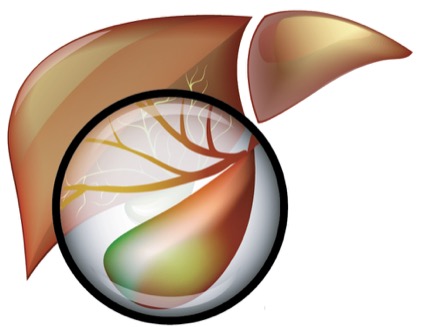Outcomes of emergency versus elective ventral hernia repair can differ dramatically, including increased rates of mortality, reoperation and readmission when a ventral hernia is managed in the emergency setting.
During MedStar Georgetown University Hospital’s Abdominal Wall Reconstruction 2021 Conference, Brent Matthews, MD, reviewed nonoperative management strategies for acute appendicitis, small bowel obstruction, diverticulitis, acute cholecystitis and perforated ulcer in patients with a complex ventral hernia or history of abdominal wall reconstruction.
“The goal is to manage patients’ acute GI surgical emergency nonoperatively so that abdominal reconstruction does not have to be done simultaneously or violate a previous successful ventral incisional hernia repair,” said Dr. Matthews, a professor and the chair of surgery at the University of North Carolina and the surgeon-in-chief at Atrium Health, in Charlotte.
Acute Appendicitis
According to Dr. Matthews, NOTA (Non-Operative Treatment for Acute Appendicitis) was one of the first studies to define short- and long-term outcomes of nonoperative treatment for acute appendicitis, demonstrating a one-year failure rate of approximately 30% (Ann Surg 2014;260[1]:109-117).
“In an emergency involving a complex ventral hernia, this may provide adequate treatment to take care of patients in an elective fashion,” said Dr. Matthews, who noted that a scoring system is being developed to predict which patients will fail and which ones will be successful with nonoperative treatment.
The CODA (Comparison of Outcomes of Antibiotic Drugs and Appendectomy) trial showed that patients with an appendicolith have approximately double the failure rate (30%) at 90 days of patients who do not have an appendicolith, suggesting one possible way to stratify patients (N Engl J Med 2020;383[20]:1907-1919).
Small Bowel Obstruction
For cases of small bowel obstruction, water-soluble contrast studies can help predict which patients will be successful with nonoperative treatment. According to Dr. Matthews, prospective randomized trials have shown reduced operative rate and time to resolution of obstruction as well as rshorter hospital stays with contrast studies (World J Surg 2008;32[10]:2293-2304).
Dr. Matthews and his colleagues perform a CT scan of the abdomen/pelvis during initial assessment to examine peritoneal fluid, small bowel thickening, differential enhancement and pneumatosis intestinalis.“If contrast appears in the colon within 24 hours and there’s been no clinical changes of concern, we’ll continue with conservative management,” he explained. “If contrast fails to appear in the colon within 24 hours, however, this is typically diagnostic of a complete obstruction that requires surgical intervention.”
“This is still a difficult area to manage patients because there is a significant amount of clinical judgment that is required,” he added.
Diverticulitis
As Dr. Matthews explained, besides appendicitis, there is probably no other surgical condition that has been studied with more rigor than diverticulitis, and there are several management guidelines available.
A prospective randomized trial of elective resection versus observation in diverticulitis with extraluminal air or abscess initially managed conservatively found that only 20% of patients randomized to observation had a recurrence within one year, and many of these patients could still be managed nonoperatively (Br J Surg 2018;105[8]:971-979).
“This study showed that the majority of patients observed following conservative management of diverticulitis with local extraluminal air do not require elective surgery,” Dr. Matthews said. “These patients can be managed nonoperatively and avoid exploration, whether laparoscopic or open, and violation of the hernia … during a contaminated procedure.”
Acute Cholecystitis
According to Dr. Matthews, there is a growing body of literature supporting the value of percutaneous cholecystostomy tube placement to treat acute cholecystitis. A recently published study of 70 patients treated with percutaneous cholecystostomy tube alone found that 12.9% developed recurrent biliary sepsis necessitating readmission following initial resolution of symptoms and tube removal (J Gastrointest Surg 2020;24[3]:627-632).
“There’s a perception that that rate is much higher and that these patients will require elective cholecystectomy in the postoperative period,” said Dr. Matthews, who noted that no difference in survival was observed between patients receiving percutaneous cholecystostomy tube alone and subsequent interval cholecystectomy.
“Unfortunately, management of percutaneous cholecystostomy tubes can be fairly labor-intensive and involve both surgery and interventional radiology,” he acknowledged. “A large number of patients will require multiple interventions to be managed successfully.”
Perforated Ulcer
A study of nonoperative treatment for perforated ulcer, first published in 1989, demonstrated a mortality rate that was similar between immediate surgery and nonoperative treatment (N Engl J Med 1989;320[15]:970-973). According to Dr. Matthews, however, the key is selecting those patients who are appropriate for nonoperative treatment, because many patients are not in that category.
A study that looked at stratifying high-risk patients into nonoperative treatments showed a reduction in mortality from 8.9% to 3.5% among patients who underwent an aggressive approach with peritoneal drainage (World J Surg 2007;31[12]:2341-2344).
“There is certainly a lot more to understand about who will be successful with nonoperative treatment of perforated peptic ulcer,” said Dr. Matthews, who noted that several studies have also looked at endoscopic therapies as well as using endoscopy to diagnose these patients.
A recently published pilot study to evaluate the effectiveness and safety of urgent endoscopy for gastroduodenal perforation showed that patients with a perforation diameter less than 5 mm were more likely to be successful with nonoperative treatment (Surg Endosc 2021 May 19. doi:10.1007/s00464-021-08555-2).

